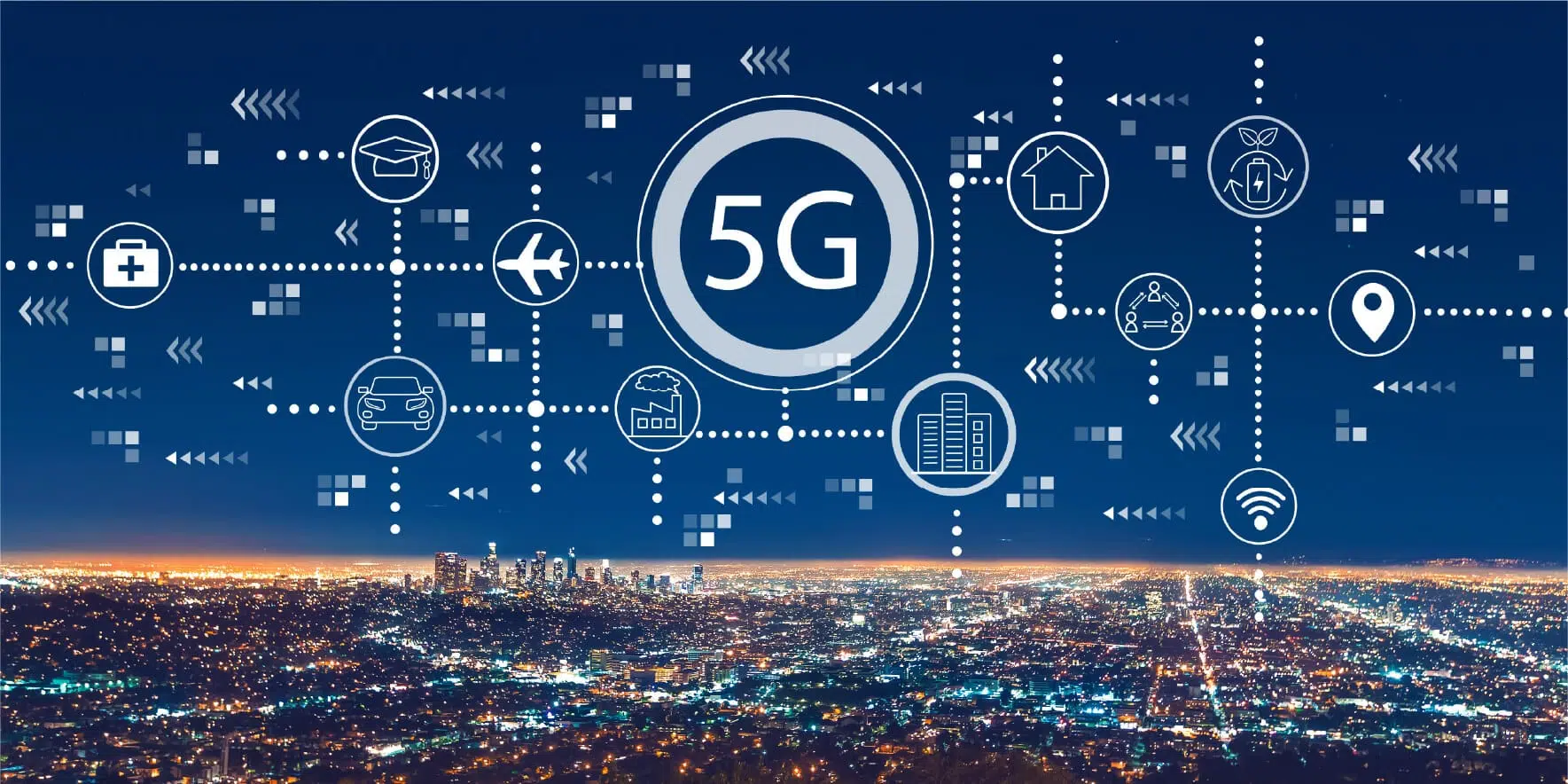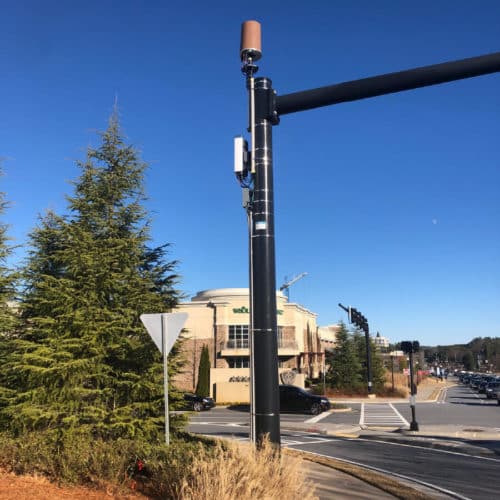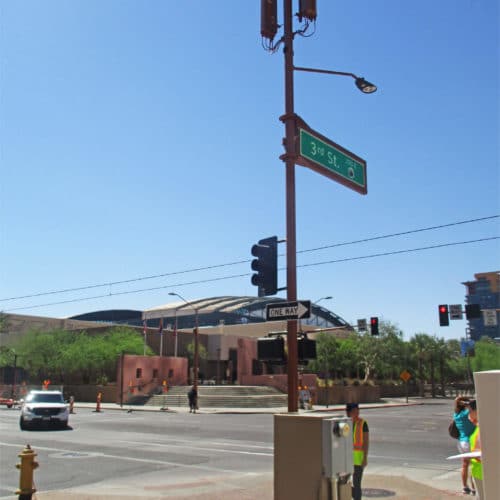- May 5, 2020
- Perspectives
The Benefits of 5G for Businesses, Cities, Citizens, and Communities
What city leaders need to know


Kevin Clements, P.E.
Telecom Practice Lead

David Reuter
Telecom Practice Lead

Kevin Clements, P.E.
Telecom
Practice Lead

David Reuter
Telecom
Practice Lead
5G—the newest generation in wireless networking—has greater capacity and is faster, more responsive, more reliable, and more energy efficient than previous generations. It’s no surprise 5G is such a hot topic, as it promises significant benefits to citizens, businesses, and communities. While 3G and 4G relied on personal devices, like cell phones, for connectivity, 5G will integrate with infrastructure, buildings, appliances, and products—creating an Internet of Things (IoT). Cities and communities with 5G stand to attract residents and businesses that will leverage this increased connectivity. Beyond that, 5G will power most of the smart city applications that improve many aspects of our quality of life.
5G Benefits for Citizens
From healthcare to transportation to energy efficiency, 5G promises to save citizens time and money and improve key quality of life indicators.
Improved Healthcare
With remote patient monitoring, remote surgery, and telemedicine applications, 5G could generate hundreds of billions in cost savings yearly, not to mention hours saved traveling and waiting to see healthcare providers.
Safer Transportation
Self-driving vehicles, which will rely on 5G technology, can reduce emissions, cut travel time, and save lives. 5G-enabled road systems will reduce congestion while railway sensors will decrease train cancellations, allowing people to get around quickly, reliably, and efficiently.
Energy Efficiency
Smart energy grids will have greater capacity and handle demands more efficiently and reliably. They’ll also be able to detect and respond to spikes in demand, reducing blackouts and brownouts. Real-time data will be shared with citizens through smart meters, so they can adjust their consumption and reduce their costs.
5G Benefits for Businesses
With 5G, business will work faster and more efficiently, saving costs and increasing revenue. Remote working collaboration will improve, boosting productivity gains and staff morale. Businesses on the forefront of technologies like driverless cars, drones, Artificial Intelligence, robotics, remote-controlled machinery, and virtual and augmented reality will see significant opportunities to use IoT for commercial purposes. Lastly, a stable, fast mobile network will make smart, automated transportation possible—meaning less time wasted commuting and more time for productivity.
5G Benefits for Cities
Because of the benefits mentioned above, people and businesses will want to go where 5G is available. A national study showed more than 75% of prospective home buyers said good cellular connection was important to them and 83% of millennials said cell service was the most important factor in buying a home.
Additionally, 5G can create revenue streams for utilities and save billions of dollars annually by introducing technologies like smart garbage collection and smart lighting. Technologies that track available parking will minimize pollution and wasted time, and these same technologies can be used to track pedestrian and bicycle traffic—aiding in planning and reducing accidents. Shipping companies are using wireless sensors to track temperature changes in temperature-sensitive medications, equipment, and food—preventing the spread of food-borne illnesses and losses from damaged goods and medications. 5G promises to solve some of our cities’ biggest issues, including:
- • improving health and social care
- • reducing traffic congestion and overcrowding in transportation systems
- • powering a nation of electric vehicles
- • maintaining cellular network capabilities during emergency events
- • supporting autonomous vehicles
- • public safety/monitoring via cameras and connected Internet of Things (IoT) devices used throughout city infrastructure
Overcoming Concerns and Controversy
While this is promising technology, it is not without cost and controversy. The estimated cost to cover the entire United States with a 5G network runs into the hundreds of billions of dollars. While cell phone carriers and technology manufacturers wait for a decision from the federal government about paying for the network, some are working with cities to finance deployment. While implementing smart city technologies falls to the public sector, most of the initial investment could come from partnerships with the private sector.
One of the biggest concerns associated with 5G has to do with the aesthetics and placement of small cell nodes. Small cells are important because they provide flexibility and increased capabilities at an attractive cost. Small cell infrastructure is more environmentally friendly than cell towers and provides a cleaner signal with less power. To get adequate coverage, the distance between nodes is as close as 300 feet, which means in a square mile, there could be hundreds of nodes. This substantial number of nodes needs to be placed, wired to the power grid, and potentially connected to fiber optic cable. 5G requires a lot of gear and some people don’t like the way it looks—generating a lot of “not-in-my-backyard” criticism. What cities need to know is that they can influence how and where 5G equipment is installed. Some cities are mandating that equipment be installed underground. When cities have clearly written ordinances and design guidelines, providers must follow them.
Another common complaint—that has been disputed by the World Health Organization and multiple scientific studies—is that the small cells can cause long-term health problems.
Transforming Communities
5G is not the first technology to face some initial barriers, but we’ve seen many cities that have adopted this technology and are thriving. Kimley-Horn’s telecommunications professionals have successfully navigated the rapid rise of technology, stayed ahead of the learning curve, and provided our clients with innovative and tailored solutions for over two decades. We have designed small cell sites in cities throughout the country and have relationships with major telecom companies, utility companies, internet service providers, private developers, municipalities, and public institutions and organizations. We understand the site acquisition and site engineering side. We’re here to help navigate the wireless landscape and transform communities into vibrant smart cities that will make our lives better, our communities safer, and our nation more prosperous.
About the Authors

Kevin Clements, P.E.
Kevin has more than 16 years of experience providing structural and civil engineering design services and program management for the telecommunications industry throughout the United States. His practical engineering experience includes structural analysis, structural modification design, construction phase planning, civil design plans, closeouts, inspections, and permitting. Working with many of the nation’s top carriers and infrastructure owners, he oversees a diverse workflow consisting of traditional tower assets, small cell nodes, in-building wireless solutions, fiber networks and construction implementation.

David Reuter
David has more than 20 years of experience providing site development, engineering, and project management services for the telecommunications industry. He works closely with carriers, fiber providers, cell tower owners, and utilities to design networks that meet the demand for faster speeds and more reliable connectivity. In addition to traditional engineering services, he consults with clients on Smart City Initiatives—the deployment of 5G, small cell, and Internet of Things (IoT) technologies—to provide the infrastructure needed to carry huge amounts of data and pave the way for a smarter, more connected world.



